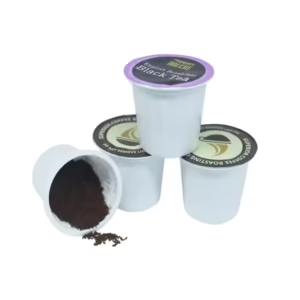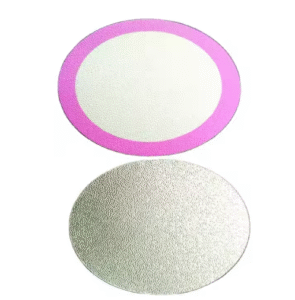Third-Party Private Label K-Cups Wholesale and packaging of coffee for third parties capsules
The single-serve coffee market, dominated by the ubiquitous K-Cup, has revolutionized how we enjoy our daily brew. While Keurig(KDP) is the original creator, a vibrant ecosystem of “third-party private label K-Cups” has emerged, offering consumers a wider variety of choices and brands. But what exactly are these K-Cups, how are they made, and can you use them in your Keurig machine? Let’s dive in
What is a Third-Party Private Label K-Cup
Simply put, a “third-party private label K-Cup” refers to a single-serve Coffee pod that is manufactured by a company other than Keurig, but is branded and sold under another company’s (the “private label”) name. This means:
- Third-Party Manufacturer:A specialized company handles the production, from sourcing coffee beans to filling and sealing the pods. They have the equipment and expertise to create K-Cup compatible pods.
- Private Label:A brand, retailer, or even an individual entrepreneur sells these K-Cups under their own brand name and design. They essentially “white label” the product, putting their unique stamp on it.
This model allows businesses to offer their own branded single-serve coffee without the immense investment of building a full manufacturing facility. It fosters innovation, allowing for unique blends, origins, and even specialized beverages beyond just coffee.
How Third-Party K-Cups Wholesale Produced?
The production of a third-party private label K-Cup wholesale is a sophisticated process that leverages specialized machinery and strict quality control. Here’s a general overview of the steps involved:
- Sourcing and Roasting:The private label brand or the third-party manufacturer sources high-quality green coffee beans. These beans are then roasted to specific profiles to achieve the desired flavor characteristics.
- Grinding:The roasted coffee beans are precisely ground to a specific fineness, typically a medium-fine to fine grind. This is crucial for optimal extraction during brewing.
- Cup Forming & Loading:Rolls of specialized plastic (often polypropylene #5 for recyclability) are heated and formed into the individual K-Cup shapes. These empty cups are then automatically loaded onto the production line.
- Filter Placement:A non-woven filter material (often fiber or a blend) is precisely welded into the bottom of each K-Cup. This filter allows water to pass through while keeping coffee grounds contained.
- Coffee Dosing:A precise amount of ground coffee is accurately dosed into each K-Cup. Accurate dosing is essential for consistent flavor, concentration, and aroma in every brew. For specialty or flavored coffees, additional flavoring devices might be integrated.
- Nitrogen Flushing:This is a critical step for preserving freshness and aroma. The ambient air inside the K-Cup is flushed out and replaced with food-grade nitrogen. Oxygen is a major enemy of coffee freshness, and nitrogen helps to create an inert environment.
- Lid Sealing (Hermetic Seal):A foil or plastic lid is heat-sealed onto the top of the K-Cup, creating a hermetic (airtight) seal. This further protects the coffee from oxygen and moisture.
- Quality Control & Packaging:The sealed K-Cups undergo rigorous quality checks to ensure integrity and consistency. Finally, they are packaged into boxes or other retail formats, often with customized branding and design.
Third-party manufacturers often offer flexible solutions, including using their in-house coffee blends, developing custom blends, and providing various packaging options. They aim for short lead times and the ability to scale production from thousands to millions of capsules.
Can Those K-Cups Be Used in K-Cup Machines?

Yes, generally! The vast majority of third-party private label K-Cups are designed to be fully compatible with Keurig and other “K-Cup compatible” single-serve coffee makers. While Keurig pioneered the K-Cup system, the patent on the original K-Cup expired, opening the door for other manufacturers to produce compatible pods.
These compatible pods are engineered to fit the brew chamber of K-Cup machines, allow proper water flow, and be punctured by the machine’s needles without issue. Many third-party manufacturers specifically state that their K-Cups can be used in Keurig and other K-Cup compatible brewers.
However, it’s always a good idea to check the packaging for compatibility claims. Some older or very specific Keurig models might have proprietary features that limit compatibility with certain third-party pods, though this is less common with modern machines.
Introducing K-Cup Automatic Machines
The production of K-Cups, whether by Keurig or third-party manufacturers, relies heavily on sophisticated automatic machines. These machines are the backbone of efficient and high-volume single-serve coffee production.
K-Cup automatic filling and sealing machines are engineered for precision and speed, handling multiple steps in the production process with minimal human intervention. Key features and types include:
- High Production Speeds:These machines can produce anywhere from 50 cups per minute for entry-level models to several hundred (or even thousands) of K-Cups per minute for large-scale industrial machines.
- Precision Filling Mechanisms:They utilize servo-motor driven volumetric augers to ensure highly accurate coffee dosing (typically within ±0.2 grams), which is crucial for consistent taste.
- Nitrogen Flushing Systems:Integrated nitrogen flushing devices are standard, ensuring the preservation of coffee aroma and freshness by replacing oxygen with food-grade nitrogen before sealing.
- Automated Sealing:Advanced heat-sealing technology creates strong, hermetic seals using pre-cut lids or rolled film, preventing leakage and maintaining product integrity.
- Versatility:Many machines are designed to handle various capsule styles (K-Cups, Nespresso, Dolce Gusto, etc.) and can be adapted for different product types beyond coffee, such as tea, hot chocolate, or even powdered supplements.
- Integration with Packaging:Higher-end machines can be integrated with automated cartoning and boxing systems, streamlining the entire packaging process from filling to retail-ready boxes.
- Types of Machines:
- Semi-Automatic Tabletop:Smaller, more affordable machines for lower volume production, often combining filling and sealing in a compact unit.
- Automatic Rotary:Cups move on a rotating platform through various stations (filling, nitrogen flushing, sealing). These are known for high-speed production.
- Automatic Inline:K-Cups are processed in a linear, straight-line fashion, with multiple lines often running simultaneously for very high output.

Small Desktop Semi-Automatic K-Cup Packaging Machines
For entrepreneurs, small businesses, or those looking to test the waters of the K-Cup market without huge investment, small desktop semi-automatic K-Cup packaging machines offer an accessible entry point. These compact units typically handle the filling and sealing processes for K-Cups, though often requiring manual loading and unloading of individual cups or trays. While not designed for high-volume industrial production, they are perfect for craft coffee roasters, local cafes wanting to offer their own branded pods, or even for personal use in home-based operations. They provide a cost-effective way to produce small batches of high-quality, customized K-Cups, allowing businesses to control their product’s quality and branding from concept to final package
Who we are
We are a supplier of k-cup wholesale and k-cup packaging machines for many international trade companies. We have professional engineers and operators for every machine produced at our factory and also support for one-by-one customization services.
We also provide custom k-cup co-pack services for your sample.
